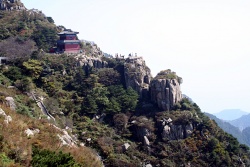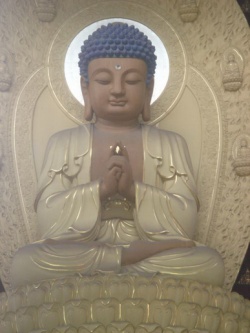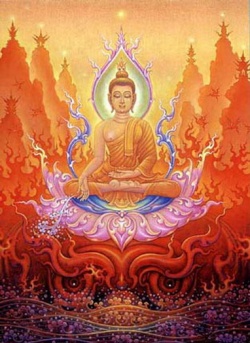The Power and Participation of Women in Mahayana Buddhism
by Rev. Patti Nakai
Part Three: The Power and Participation of Women in Mahayana Buddhism
In the last installment, I talked about the early form of Buddhism called Theravada ("the elders"). This form was later called Hinayana ("small vehicle") by the movement which developed a few hundred years after Buddha's death. This movement, known as Mahayana ("large vehicle"), grew as more and more serious seekers realized that Theravada's insistence on following hundreds of rules and suppressing physical desires was really an attachment to fixed ideas. What was desired was a path to experiencing the ultimate truth of impermanence which the Buddha taught. In Mahayana Buddhism, since discrimination between beings was a delusion that must be transcended, lay people had as much potential to be enlightened as clergy. "Lay" and "clergy" were only artificial categories created by karmic conditions. For women this meant a new opportunity to be recognized as seekers because women were less free to leave their obligations in the secular world than men.
Northern India (Ghandara)
While Theravada Buddhism became established in southern India and neighboring countries, Mahayana flourished in northern India. This region, called Ghandara, was active in the commerce along the route between the Mediterranean and China known as the Silk Road. With the interaction between people of various cultural backgrounds along the Silk Road, the people of Central Asia in the early centuries (A.D.) were more cosmopolitan than traditional. (Ghandara Buddhist sculptures are easily recognized for their Greco-Roman characteristics.) In the rising merchant class, it was the women who were very involved in supporting Buddhist temples. It may be crass to say, but because women were in a position of economic power, Buddhist institutions had to pay attention to their spiritual needs. This explains the emphasis on sutras featuring women such as the Meditation Sutra and the Queen Srimala Sutra.
China
Mahayana Buddhism spread to China from Central Asia. In China, one of the most powerful champions of Buddhism was the Empress Wu (late 7th century). She knew that a woman seizing control of the throne went against Confucian tradition, so she used Buddhist scriptures to justify her rule. Although she was ruthlessly using Buddhism for her own political gain, the new sutras which declared the spiritual potential of women benefited the nuns in various Chinese sects. It was not uncommon for nuns to practice and work alongside monks in the monasteries, and for male and female clergy to participate together in rituals. In Chinese temples, nuns enjoyed a high degree of respect and equality, a situation that was not to be in Japan.
Japan
Ironically, when Buddhism was first established in Japan in the 6th century, the three sutras emphasized by Prince Shotoku were the Lotus Sutra, Vimalakirti Sutra and the Queen Srimala Sutra. The latter two described the acceptance in Buddha's time of female seekers as being the equal of men.
In one episode of the Vimalakirti Sutra, a woman creates the illusion of changing bodies with one of the Buddha's disciples in order to prove that the physical form of a person has nothing to do with their spiritual insight. In doing this, the woman teaches the disciple that his prejudice against women was an attachment to fixed ideas, which goes against the basic Mahayana teaching of transcending artificial categories. (I have not read the Queen Srimala Sutra, but an English translation was published a few years ago.)
Unfortunately for women in Japan, a certain episode in the Lotus Sutra was used to justify discrimination against them in Buddhist institutions. In that episode, the Princess Naga, despite her devoted practice, is told she cannot attain enlightenment because her defiled female body is a hindrance. However, when she proves how earnestly she follows the Buddha's teachings, she is "rewarded" with the sudden transformation into a male.
During the Heian period in Japan, women produced honored literary works like The Tale of Genji. After that however, the position of women steadily declined. By the Kamakura period of Shinran's day, nuns were segregated from monks, and all women, clerical and lay, were out of consideration for enlightenment unless they could repeat the "miracle" of Princess Naga.


